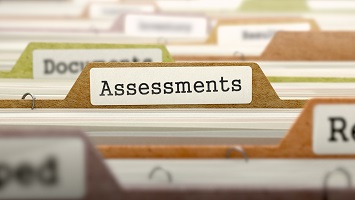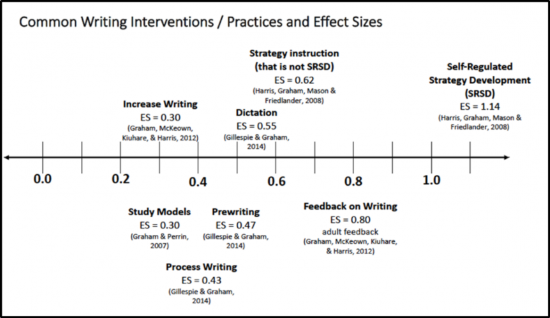“Why aren’t schools putting more of a priority on social-emotional learning (SEL)?” We frequently ask ourselves this question during our behavior planning meetings because we hear educators in our region express a deep-seated belief that what and how kids learn socially and behaviorally is important. We have come up with a multitude of reasons why SEL takes a backseat and one reason tends to stand out. In education today, academic standards and benchmarks are readily available, prioritized, and privileged, while there is very little available to help schools anchor, measure, and monitor social wellness and social learning.
We began a quest to learn more about the topic of social and behavior screening tools. Systematic or universal screening is a process for identifying students who are not responding to primary prevention efforts, or Tier 1 interventions, and who may benefit from additional, more focused efforts, or Tier 2 & Tier 3 interventions. It is a proactive systems approach that allows schools to use a “gating process”, or a series of increasingly specific checkpoints, to quickly and easily identify students who need focused interventions on an on-going basis. (Lane, Kalberg, & Menzies, 2009). The gating process narrows from considering the behavior needs of all students in a school, to a group of students meeting criteria for additional supports, to the individual students assigned to the intervention.
This All-to-Some-to-Few process of consideration is consistent across behavior screening tools; however, the specific gating mechanism – or number and criteria of checkpoints – will vary based on the screener utilized. The first gateway for some screeners includes the teacher assessing the behaviors of all the students in their classroom across specific domains (e.g., Student Risk Screening Scale). For other screeners, the first gating mechanism includes ratings from multiple teachers and/or family members (e.g., Strengths and Difficulties Questionnaire and the BASC-2 Behavioral and Emotional Screening System). Still other screening options include a multi-step gating process of first ranking student behavior needs and then completing a more formal assessment on only the handful of students with the highest needs (e.g., the Systematic Screening for Behavior Disorders and the Early Screening Project). If at the first gateway a student meets criteria for behavior intervention(s), s/he will then either immediately be invited to participate in a targeted small group intervention or be referred for additional assessment, such as direct observations and/or referral to the Child Study Team.
The goal of the universal screening process is to create a proactive prevention model where students’ behavioral needs are identified on an on-going basis and addressed early on, rather than waiting until behavior becomes a major disruption to learning. Screeners can also be used to monitor changing behavior needs as the year progresses as most can be administered three or four times a year.
There are many universal screening tools available, so schools should carefully consider which screener is most appropriate to their needs. Key considerations include (Lane et al., 2009):
- Is the screening tool psychometrically sound, meaning it has been found to be a reliable and valid measure of the behavior index it claims to assess?
- Is the screening tool reasonable, meaning it requires limited time and little to no money to administer, score, and analyze?
- Is the screening tool suitable to the needs of the student population, meaning it is appropriate for the age and developmental levels of the students in the school?
We are eager to further explore this topic for the region in partnership with school leaders and coaches. The RSE-TASC “PBIS Forum for Administrators” on May 10th will dedicate a significant portion of the agenda to exploring social-emotional universal screening tools. We have started to engage PBIS coaches and teams in developing a more uniform process for screening all students through the collection of data on students’ attainment of the schoolwide PBIS behavioral expectations. Through development of effective systems for collecting student behavioral data, we can partner in creating a stronger and deeper focus on how students learn and grow socially in our schools.
References
Lane, K. L, Kalber, J. R., & Menzies, H. M. (2009). Developing schoolwide programs to prevent and manage problem behaviors: A step-by-step approach. New York, NY: Guilford



 Data-Driven Decision-Making
Data-Driven Decision-Making  Increasing Post-School Success through Interagency Collaboration
Increasing Post-School Success through Interagency Collaboration  How Can We Improve Deeper Learning for Students with Disabilities?
How Can We Improve Deeper Learning for Students with Disabilities?  Positive Classroom Management: Creating an Environment for Learning
Positive Classroom Management: Creating an Environment for Learning  Self-Determination Skills Empower Students of All Ages
Self-Determination Skills Empower Students of All Ages  Fidelity of Implementation: What is it and Why does it Matter?
Fidelity of Implementation: What is it and Why does it Matter?  Rethinking Classroom Assessment
Rethinking Classroom Assessment  A Three-Step Approach to Identifying Developmentally Appropriate Practices
A Three-Step Approach to Identifying Developmentally Appropriate Practices  Transforming Evidence-Based Practices into Usable Innovations: A Case Study with SRSD
Transforming Evidence-Based Practices into Usable Innovations: A Case Study with SRSD